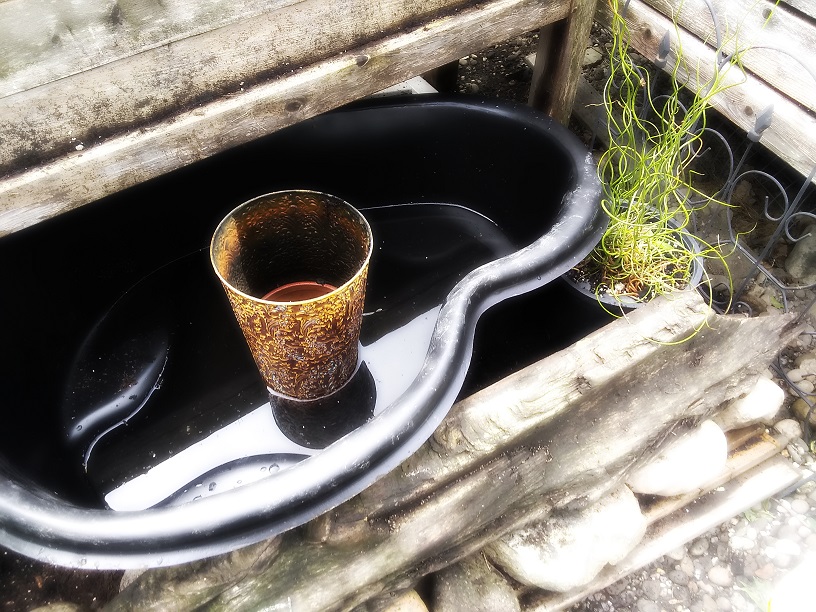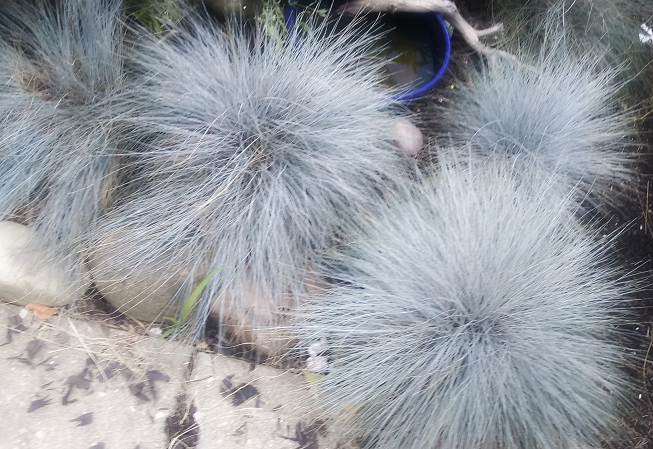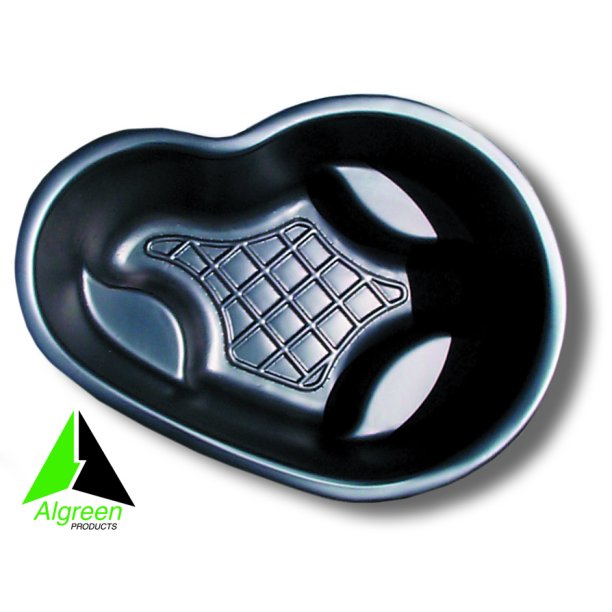|
Creating Easy Bogs or Water Gardens Here's one of the water
feature designs i've been working on for I am using this pond form
that was available on sale. This one is a nice size and shape, and it has those really neat plant shelves for small potsof plants or decorations.
Ingredients One pond form for each area of
your plant groupings. Aquatic plant Smartpots. Aquatic, marginal and bog
plants. Pea gravel and sand is
optional. Mix items you already have as garden decor, pick a water theme, serenity, or asian or celestial theme. Use your imagination. I use Chinese vases and statues of water birds, etc. from my home decor to decorate the outdoors. Then they come back in for the winter. Add shapes and colors common to your theme. I plant bamboo in pots to move around between gardens. I love to use windchimes and rain chains hanging from branches. They add a bit of serenity to my Buddhist/Tibetan decor. The birdfeeders and birdbaths look right at home and creates a beautiful habitat for you and wildlife. Large and medium stones with flat bottoms to layer around or up the sides of your pond. They can be used inside the pond form to create ledges or islands. Driftwood or any other natural material you come up with can be layered around the form, and can be used inside the pond form once you figure out where your plants are going.. I'm building around the og pond, not inserting it into the ground. I want the height to be right under the raised garden bed.. Those plants will give height and flow to the raised beds. The plants in the bed will add additional height to the pond's design. and serve as a backdrop. Plants are chosen for their heights and grassy features. I'll have stones and limbs with nooks and crannies to stick other plants into. The plants will be hardy to this planting zone and will include Yucca in the raised bed (tall,yellow and green), Sweet Flag grass (shorter and yellow and green for inside the pond), Elijah blue festucca (short blue green evergreen mounds of fescue grass) in the garden bed. Louisiana Black Gamecock Iris (Deep purple for use in and around the pond)."Color Guard", hardy, swordlike and spiky up to 3 ft. tall). Fan shapes, spirals and spear shapes will dominate. I use small iron garden fence panels or garden edging while i work, and when i'm not in the gardens, to keep my dog from drinking from or splashing in it. I remove the fence panels if i'll be staying outdoors for a while and can keep my eyes on her sneaky ways after the pond is done. I will update this page if I add anything more to these areas, and photos of the plants filling in and doing their thing. I will also add what seems to have been an error in judgment in planting or the design, as they happen. Note: There are plants that are "marginal" bog plants, as they can grow in wet areas around bogs and ponds, and also in the bogs/ponds. These are known as shallow water plants, as well. The plants inside the bog: All hardy to my Zone 6 (Southwestern Pa.) Sweet
flag - An ornamental grass that can be grown on land, in a bog, or
completely in water. Corkscrew Rush - This spiral rush likes wet or moist soil and can be submerged in up to 4” of water. It spreads, so i keep it confined in pots. It's also a cool houseplant if you keep it very wet. Very tolerant of abuse. I once left one out of it's pot, just laying around because i forgot about re-potting it. After a few weeks, it still had green shoots among the dead. I re-potted it, and it's growing quite nicely. Blue
Rush. This will also grow beautifully in pots on your deck and porch. Dark blue-green
stems grow into a lightly mounded, upright clump. Will flourish in areas
where its roots are in water or where it is simply in soil. This plant makes
a great bio filter when planted in pea |
|
I've grown a few
bog gardens, which are quite similar to rain gardens, except that
the bog garden The bog water
feature is at the corner of a seating area with a bench. |
 |
| Planting my bog garden above ground
allows a lot more creativity and a lot less heavy digging.
I add a shallow layer of gravel and sand to keep stuff from
slipping on the form's surface. I dump a bag of high quality potting or top soil and some compost
in when i finish adding the potted plants, so lightweight plants not in containers find
something to hold onto. Yes, it's mud. After all, it is a bog! |
 |
|
There are also pots, pebbles and soil around the shape of the pond form, so that i can plant regular plants, as well as aquatic. You can see a pot inside a pail with no drainage. The ornamental grass in the other pot is called "Corkscrew Rush". It loves wet, soggy, marshy, boggy places. I like to use it in a pot with no drainage, so that water is always in it. It survived our cold Zone 5 winters beautifully. I will try some growing in just water, soil and gravel and see how it does. It develops a large and sturdy root mass.
|

This is one awesome
piece of driftwood, given to me by a fisherman friend. The copper pots are decorative containers with no drainage holes. Perfect to float a water plant in or place a potted bog plant into. Bog care isn't all that hard. Most plants are perennials. You'll be planting most of it inside pots, and inserting the pots into the bog, to avoid invading plants that have to be separated. Once the pots appear crammed with plants, you can repot and re-insert the plants. The leaves will all die down in the winter, like most stuff. But it will come back in spring. |
 |

|
Quick Links
Content, graphics,
photos and design ©2020 marysbloomers.com
All rights reserved
This
site uses Watermarkly Software



